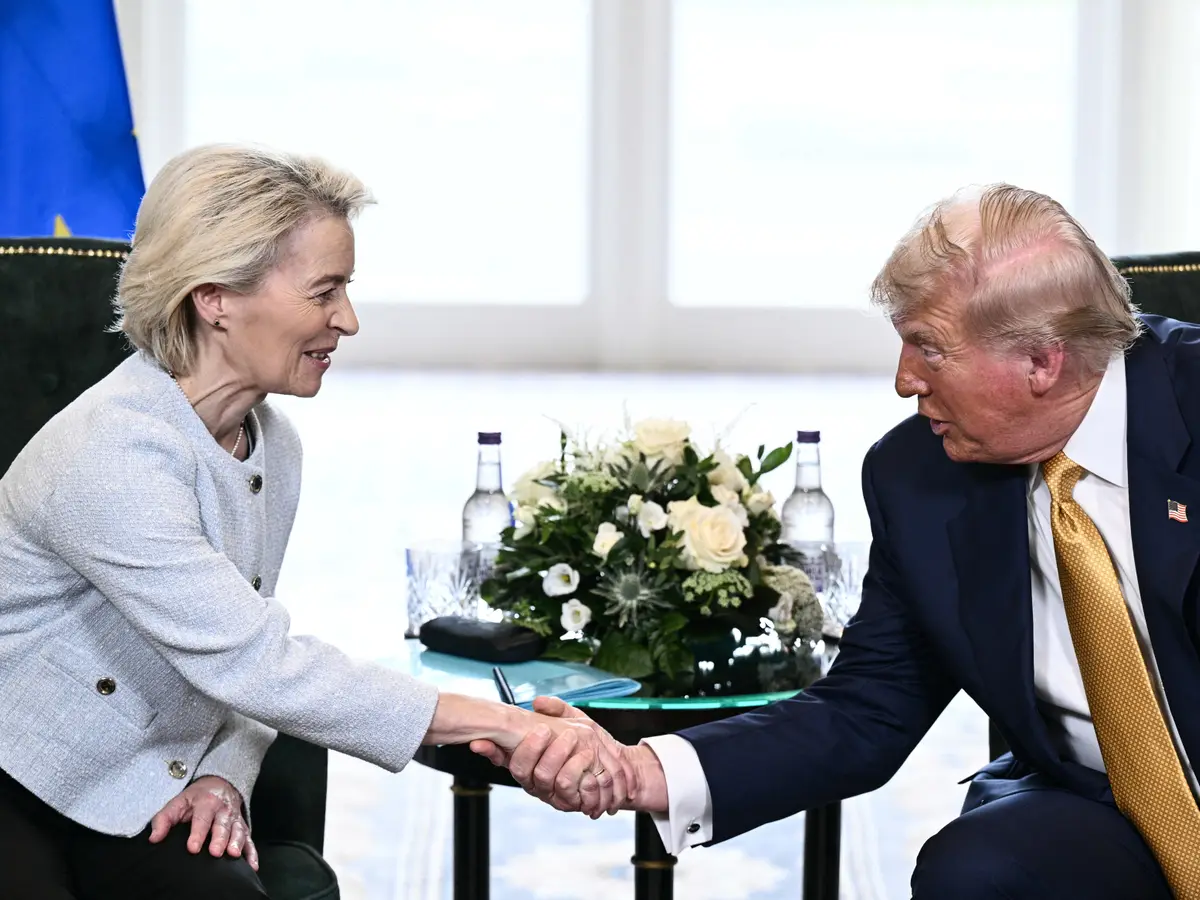After several months of uncertainty, tariffs, and tense transatlantic back-and-forth, the United States and European Union have finally struck a major trade deal. Announced on Sunday, the framework agreement marks a reset in economic ties under President Donald Trump’s second term, and it’s set to reportedly impact industries from automobiles to semiconductors to liquefied natural gas (LNG). The deal doesn’t just settle some of the biggest tariff disputes, it also sets the tone for future investments, energy trade and even defence procurement.
So, what’s in the deal? And who wins or loses? Here’s a closer look.
What does the deal include?
Under the new trade deal, almost all European Union goods entering the US will now face a flat 15 per cent baseline tariff. That includes automobiles, semiconductors, and pharmaceuticals sectors that previously saw much higher import duties. For instance, EU-made cars currently face a 27.5 per cent duty, which will now be more than halved.
However, there’s a twist.
According to European Commission President Ursula von der Leyen, the US is still finalising separate decisions under its controversial Section 232 national security trade investigations, especially on pharmaceuticals and chips. “Whatever U.S. decisions come later on these sectors will be ‘on a different sheet of paper’,” von der Leyen clarified, as quoted by Reuters. This means that while a 15 per cent tariff ceiling is agreed upon, sectors like chips and drugs might still face special treatment later.
Zero tariffs on aircraft, raw materials, and more
There’s also some good news for specific sectors as both sides agreed to zero-for-zero tariffs on a range of goods. These include the following given things:
The deal also reportedly leaves the door open to expanding the list. However, tariffs on spirits, a major export for both sides, are still “to be established”.
What about Steel & Aluminum?
On the other hand, there’s no relief on metals yet.
US tariffs on European steel and aluminium will remain at 50 per cent, at least for now. But according to von der Leyen, these duties will eventually be reduced and converted into a quota-based system, which would cap volumes but offer tariff relief and will reportedly be a compromise often used in sensitive sectors.
$750B LNG deal & Defence
In one of the most strategic parts of the agreement, the EU committed to purchasing $250 billion worth of US liquefied natural gas (LNG) annually for three years, replacing its now-curtailed Russian gas imports. That adds up to $750 billion in total purchases. This is a massive boost for US energy exporters. The EU also pledged to source nuclear fuel from the US, marking a deepening of its energy security ties with Washington.
The deal doesn’t stop at trade. Europe also agreed to ramp up defence cooperation. The EU will buy US-made military equipment, though the full list is yet to be disclosed. In return, European companies are set to invest $600 billion in the United States over the course of Trump’s second term, providing a major boost to US manufacturing and tech. As per Reuters, this clause aims to re-anchor EU supply chains in the US and bolster Trump’s “America First” industrial policy, particularly in strategic sectors like clean tech, AI chips, and advanced machinery.
So, who wins?
For US exporters, especially those in the LNG, aerospace, defence, and semiconductor equipment sectors, this deal is a windfall. Energy majors like Cheniere Energy and ExxonMobil could see massive gains from the LNG commitment. European automakers, meanwhile, finally have tariff clarity, though they still face a 15 per cent barrier. That’s better than 27.5 per cent, but still a significant cost in a competitive market.
Consumers on both sides of the Atlantic might feel the pinch in the short term, especially as prices adjust to the new tariff regime. But longer-term, reduced trade friction may lead to smoother supply chains and price stabilisation.
What’s next?
Though Trump hailed the deal by calling it as a “historic win for American workers and security”, while EU leaders framed it as a pragmatic compromise in a changing global order.
Implementation will take months. Some clauses like the steel quota plan or chip tariff clarifications are still pending. But the broad contours are now set before the August 1 deadline.
In an era of tariff wars, energy insecurity, and shifting alliances, this deal brings rare predictability and perhaps a sign that Brussels and Washington can still do business, even under pressure.
(With inputs from the agencies)
